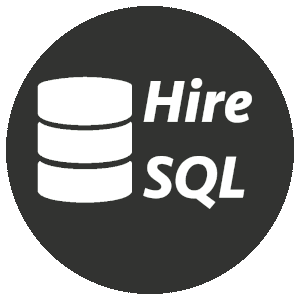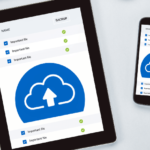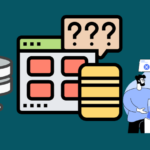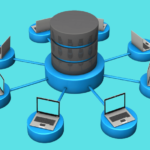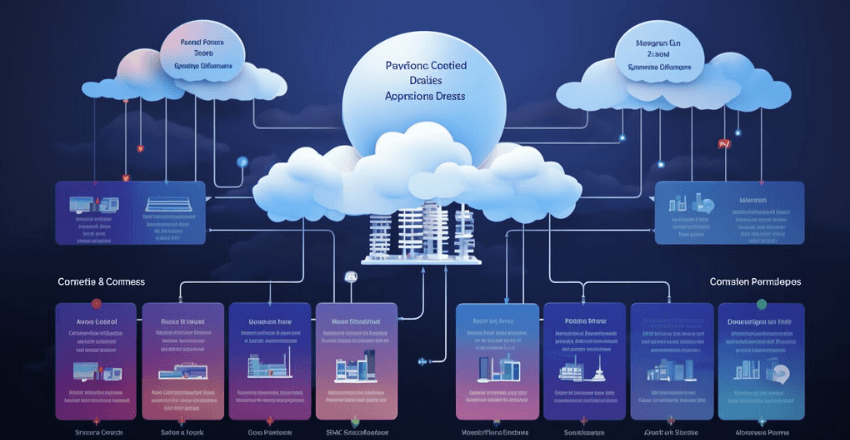
What is Database as a Service in Cloud Computing? It’s the magic carpet of data management, delivering seamless scalability and cost-efficiency.
Definition and overview of DBaaS
Database as a Service (DBaaS) is a cloud computing model that allows organizations to provision, manage, and utilize databases without physical infrastructure or extensive administrative tasks.
In simpler terms, it provides users with on-demand access to scalable and fully-managed databases through the cloud. DBaaS providers handle the underlying hardware, software installation, maintenance, backups, security, and updates, while users can focus on utilizing the database for their specific needs.
Unlike traditional database management systems (DBMS), where businesses are responsible for acquiring and maintaining physical servers or virtual machines to host their databases, DBaaS shifts this burden to cloud service providers.
With DBaaS, organizations can leverage the power of cloud computing to access robust and scalable database capabilities without investing significant upfront costs or dealing with complex installations.
Importance of DBaaS in cloud computing
Cloud computing has revolutionized how businesses operate by providing flexible resources on demand. In this paradigm shift towards the cloud, database management has evolved from traditional models to more agile solutions like Database as a Service (DBaaS).
The importance of DBaaS in cloud computing cannot be overstated due to its numerous benefits. Firstly, DBaaS offers unparalleled scalability.
As business demands fluctuate over time due to growth or changing market conditions, companies require databases that can seamlessly scale up or down based on their needs.
With DBaaS’s elastic provisioning capabilities, organizations no longer need to invest in additional hardware or worry about capacity planning since they can dynamically adjust resources allocated to their databases.
Additionally, DBaaS significantly reduces administrative overheads. Handling database administration tasks such as software installations and updates is labor-intensive and requires skilled personnel.
By offloading these responsibilities onto the service provider in a DBaaS model, organizations can free up their IT teams to focus on strategic initiatives, thus improving operational efficiency. DBaaS contributes to cost-effectiveness.
Traditional database management often involves substantial upfront investments in hardware and software licenses. Moreover, ongoing maintenance, upgrades, and compliance can incur additional costs.
In contrast, DBaaS operates on a pay-as-you-go model where businesses only pay for the resources they consume. This eliminates the need for capital expenditures and allows organizations to align their database costs directly with their usage, resulting in potential cost savings.
Database as a Service (DBaaS) is an innovative approach that enables businesses to leverage cloud computing advantages while overcoming the challenges associated with traditional database management systems.
By offering fully-managed databases on demand without extensive infrastructure or administrative burdens, DBaaS empowers organizations to scale dynamically, reduce operational overheads, and achieve cost-effectiveness in their database operations.
Understanding Cloud Computing

Definition and Characteristics of Cloud Computing
Cloud computing has revolutionized how businesses operate by providing access to a vast array of computing resources over the internet. Cloud computing involves delivering on-demand computing services, including servers, storage, databases, networking, software, and analytics.
These services are typically delivered by a third-party provider and can be accessed from anywhere with an internet connection.
One of the defining characteristics of cloud computing is its scalability. Unlike traditional on-premises infrastructure, where businesses must invest in hardware up front to meet their expected demand, cloud computing allows for flexible scaling up or down based on actual needs.
This elasticity ensures that organizations can adapt quickly to changing market conditions without incurring unnecessary costs or experiencing performance issues. Another critical characteristic is resource pooling.
In cloud computing environments, multiple customers share the same underlying physical infrastructure while maintaining logical separation. This shared resource model enables cost savings as providers can achieve economies of scale by efficiently utilizing their hardware resources across multiple users.
Benefits of Cloud Computing for Businesses
Cloud computing offers many benefits for businesses across different industries and sizes. One significant advantage is cost reduction.
By leveraging cloud services, organizations eliminate the need for investing in costly hardware and software upfront. Instead, they only pay for what they use on a subscription basis or through a pay-as-you-go model.
Moreover, maintenance costs associated with managing and upgrading infrastructure are shifted to the cloud provider. Another benefit lies in improved flexibility and agility.
The cloud allows businesses to rapidly deploy and scale applications as demand fluctuates without lengthy procurement cycles or substantial capital expenditures. This agility enables companies to seize new opportunities swiftly while providing a competitive edge in today’s fast-paced market.
Additionally, cloud computing enhances collaboration within organizations by enabling seamless access to files and applications from various devices at any time or location. This flexibility empowers distributed teams to collaborate in real time, fostering innovation and productivity.
Cloud computing provides businesses scalability, cost-efficiency, flexibility, and enhanced collaboration capabilities.
These advantages make cloud computing an attractive solution for organizations seeking to optimize their IT infrastructure and focus on core competencies rather than managing complex hardware and software systems.
Evolution of Database Management Systems (DBMS)
Traditional on-premises DBMS
The traditional approach to database management systems involved deploying and maintaining DBMS software on-premises within an organization’s data center.
This meant businesses had to invest significant resources in purchasing and managing the necessary hardware, such as servers, storage devices, and networking equipment.
Additionally, they had to hire skilled IT professionals to handle the administration and maintenance of these complex systems.
Challenges and limitations
However, this traditional on-premises approach came with several challenges and limitations. Firstly, organizations faced scalability issues as their data grew exponentially over time.
Scaling up the infrastructure required substantial capital investments upfront, leading to financial strain for many businesses.
Secondly, ensuring high availability and disaster recovery was a complex task that often resulted in extended downtime during system failures or maintenance activities. When accessing their data, organizations were limited by geographical constraints since it was housed within their physical premises.
Cost implications
From a financial standpoint, adopting an on-premises DBMS incurred significant business costs.
They had to bear expenses related to server hardware procurement and maintenance costs, software licensing fees for DBMS software, hiring skilled IT personnel for database administration tasks, and ongoing infrastructure upgrades as technology advanced.
These costs often proved prohibitive for small- and medium-sized enterprises (SMEs), hindering their ability to leverage advanced database technologies.
Introduction of cloud-based DBMS solutions
The emergence of cloud computing revolutionized how databases were managed by introducing cloud-based database management systems (DBMS). Cloud-based DBMS solutions offer numerous advantages over traditional on-premises systems by utilizing virtualization technologies.
Advantages and flexibility offered by the cloud
Cloud-based DBMS solutions allow businesses to scale their database resources up or down based on demand, eliminating the need for upfront investments in hardware and reducing operational costs.
The cloud offers elasticity, enabling organizations to quickly adapt to changing workloads and handle peak periods without sacrificing performance.
Moreover, cloud-based DBMS solutions offer improved accessibility, enabling authorized users to access their data from anywhere, anytime, through secure internet connections.
The cloud also addresses high availability and disaster recovery concerns by offering built-in redundancy and data replication across multiple geographic regions. This ensures that even in the event of hardware failures or natural disasters, data remains accessible and protected.
Furthermore, businesses benefit from reduced administrative overheads as routine tasks like backups, software updates, and performance optimization are handled automatically by the cloud provider.
Database management systems have evolved from traditional on-premises deployments to cloud-based DBMS solutions.
This transition has brought substantial advantages, including scalability, cost-efficiency through a pay-as-you-go model, improved accessibility, and data availability.
Organizations now have greater flexibility and resilience in managing their databases while reducing the burden of infrastructure maintenance costs.
Exploring Database as a Service (DBaaS)

Definition and Key Features of DBaaS
Database as a Service (DBaaS) is a cloud computing model that provides users access to a fully managed database environment over the internet.
It allows organizations to offload the complexities of database management, such as hardware provisioning, software installation, configuration, and maintenance, to a third-party service provider.
The critical feature of DBaaS is its ability to offer on-demand access to databases without the need for upfront investment in infrastructure or extensive technical expertise.
On-Demand Database Provisioning
One of the fundamental aspects of DBaaS is its capability to provision databases instantly on demand. With traditional on-premises database management systems, setting up a new database typically involves time-consuming processes like hardware procurement, network configuration, and software installation.
In contrast, DBaaS allows users to create new databases with just a few clicks through an intuitive user interface or an API. This eliminates manual intervention and significantly reduces the time required for database provisioning.
Scalability and Elasticity Benefits
Scalability and elasticity are vital features that make DBaaS highly attractive for businesses operating in dynamic environments. Scaling refers to handling increased workloads efficiently without compromising performance or stability.
DBaaS platforms offer horizontal scalability by dynamically distributing data across multiple servers or instances.
As your data requirements grow, additional resources can be allocated seamlessly without any disruption. Elasticity takes scalability further by automatically adjusting resource allocation based on real-time demand fluctuations.
In other words, it allows you to scale up or down rapidly in response to sudden spikes or lulls in your application’s workload. These scalability and elasticity benefits allow organizations to adapt quickly without investing heavily in infrastructure upfront.
Types of DBaaS Models Available in the Market: Public, Private, and Hybrid DBaaS Models Explained
DBaaS models come in different flavors to cater to diverse business needs. The three primary types are public, private, and hybrid DBaaS models.
Public DBaaS involves utilizing a database service provided by a third-party cloud platform like Amazon Web Services (AWS) or Microsoft Azure. This model offers high scalability, cost-effectiveness, and ease of use.
It is ideal for organizations looking to offload database management entirely to a trusted service provider. Private DBaaS entails an organization using its infrastructure or dedicated resources from a cloud provider to host their databases.
This model offers enhanced security and data control while benefiting from the advantages of cloud-based database management. Hybrid DBaaS combines public and private models by allowing organizations to leverage both on-premises and cloud-based databases seamlessly.
This hybrid approach provides flexibility in choosing where specific data resides based on factors like regulatory compliance or performance requirements.
Overall, understanding the definition, key features, provisioning capabilities, scalability benefits, and various Database as a Service (DBaaS) models is essential for organizations looking to leverage this powerful cloud computing solution efficiently.
Benefits and Advantages of Using DBaaS in Cloud Computing Environments

Cost-effectiveness:
Regarding cost-effectiveness, Database as a Service (DBaaS) offers significant advantages for businesses operating in cloud computing environments.
One significant benefit is the reduced hardware costs of traditional on-premises database management systems (DBMS). With DBaaS, businesses no longer need expensive hardware infrastructure to host their databases.
Instead, they can leverage the cloud service provider’s infrastructure, significantly reducing upfront capital expenditures. In addition to hardware savings, DBaaS also eliminates or reduces software licensing fees.
Many on-premises DBMS solutions require organizations to purchase licenses for each user or device accessing the database. This can quickly become costly, especially as businesses expand and their user base grows.
With DBaaS, these licensing fees are typically included in the subscription cost of the service, resulting in substantial savings. Furthermore, DBaaS minimizes administrative overheads by offloading routine maintenance tasks such as software updates and backups to the service provider.
Traditionally, organizations had to allocate manpower and resources to manage these tasks internally or outsource them at an additional cost. By leveraging DBaaS, businesses can streamline their operations and focus on core competencies while relying on experts who ensure database performance and reliability.
Improved scalability:
Scalability is a critical aspect of any modern business that needs to adapt quickly to changing demands. In this regard, DBaaS excels by offering the ability to seamlessly scale up or down based on demand.
With traditional on-premises solutions, scaling databases requires significant time and effort as businesses need to procure additional hardware or upgrade existing infrastructure.
In contrast, DBaaS allows organizations instant scalability without physical limitations because cloud providers manage the infrastructure.
As data volumes grow, businesses can readily expand their database resources to accommodate the increasing workload. Similarly, organizations can scale down their databases during reduced-demand periods, avoiding unnecessary costs associated with idly running unused hardware.
Elasticity is another key advantage provided by DBaaS. Sudden spikes in workload are common in various industries or during specific events such as sales promotions or seasonal activity peaks.
Handling these fluctuations without service degradation is crucial for maintaining optimal performance and user experience. DBaaS allows businesses to dynamically allocate additional resources to cope with high workloads and adjust them back down once the peak has passed.
Enhanced performance:
DBaaS offers enhanced performance through optimized resource allocation and high availability achieved through data replication.
In traditional on-premises database setups, resource allocation can be challenging, requiring careful planning and monitoring to ensure each application receives adequate computing power and storage space.
In a DBaaS environment, resource allocation is managed automatically by the cloud provider based on predefined settings or intelligent algorithms.
This ensures optimal utilization of resources while eliminating potential bottlenecks caused by manual configurations or human errors. Data replication is another crucial aspect of enhanced performance offered by DBaaS.
Organizations can achieve high availability and fault tolerance by replicating data across multiple geographical locations or availability zones within the cloud infrastructure.
In case of hardware failures or other disruptions at one location, users can seamlessly access replicated databases from other locations without experiencing downtime or loss of access.
By harnessing cost-effectiveness, improved scalability, and enhanced performance features DBaaS provides in cloud computing environments, businesses gain a competitive edge in managing their databases efficiently while optimizing costs and ensuring reliable operations.
Note: HTML tags in this response are used purely for formatting purposes per the instructions.
DBaaS Providers: Leading Players in the Market

The Powerhouses of DBaaS
Regarding Database as a Service (DBaaS), two industry giants stand head and shoulders above the rest: Amazon Web Services (AWS) RDS and Microsoft Azure SQL. These tech behemoths have become the go-to providers for businesses seeking robust, scalable, and highly reliable cloud-based database solutions.
With their extensive features, global presence, and solid track records, AWS RDS and Azure SQL have revolutionized how organizations manage their cloud databases.
Amazon Web Services (AWS) RDS
As a pioneer in cloud computing services, Amazon Web Services has established itself as the undisputed leader in DBaaS with its flagship offering, AWS RDS. RDS provides a comprehensive set of managed database engines such as MySQL, PostgreSQL, Oracle Database, MariaDB, and SQL Server.
With its user-friendly interface and flexible deployment options, AWS RDS caters to businesses of all sizes across various industries. One of the standout features of AWS RDS is its ability to automate time-consuming administrative tasks like patching, backups, and software updates.
This relieves database administrators from mundane duties and empowers them to focus on more strategic initiatives. Additionally, AWS’s global infrastructure allows for the seamless scaling of databases to meet dynamic workloads while maintaining high availability.
Microsoft Azure SQL
Microsoft Azure SQL has emerged as a formidable competitor in the DBaaS landscape with its cutting-edge technology stack and integration capabilities.
Built on Microsoft’s trusted SQL Server engine foundation, Azure SQL offers multiple deployment options ranging from single databases to elastic pools for higher consolidation efficiency.
Azure SQL boasts various advanced features, including intelligent performance optimization through machine learning algorithms.
It enables businesses to optimize resource utilization by automatically adapting performance levels based on workload patterns. Furthermore, Azure SQL offers seamless integration with other Microsoft Azure services, facilitating an end-to-end cloud computing experience for users.
Frequently Asked Questions (FAQ) about Database as a Service in Cloud Computing

As businesses increasingly leverage cloud computing for their database management needs, various questions arise regarding Database as a Service (DBaaS) in the cloud. Here are some frequently asked questions and their answers:
What is the process of migrating my existing database to a DBaaS solution?
Migrating your existing database to a DBaaS solution will depend on the specific service provider. Most providers offer migration tools and services, allowing for a seamless transition. However, planning and preparing adequately for the migration is important to avoid data loss or disruption.
How does DBaaS ensure data privacy and security?
DBaaS providers take security measures such as encryption, access control, and firewall protection to ensure data privacy and security. It is essential to understand the specific security protocols of your chosen DBaaS solution and ensure they align with your organization’s security requirements.
What are some cost considerations when choosing a DBaaS solution?
DBaaS solutions typically involve a pay-per-use pricing model, which allows businesses to scale their database usage according to their needs. However, comparing pricing structures and understanding potential hidden costs, such as data transfer fees or additional storage costs, is essential.
Can I use multiple DBaaS solutions simultaneously?
Yes, businesses can use multiple DBaaS solutions simultaneously, depending on their requirements. However, this may lead to complexity in database management, and it is essential to ensure proper integration and compatibility between the different solutions.
What are some potential vendor lock-in risks associated with DBaaS?
Vendor lock-in is when a business becomes dependent on a single service provider and cannot easily switch to another provider.
This is a potential risk with DBaaS, as moving data from one provider to another may be difficult. It is essential to evaluate the level of vendor lock-in associated with your chosen DBaaS solution and consider the potential risks.
Is it possible to customize a DBaaS solution to meet my specific requirements?
Some DBaaS providers offer customizations and integrations to meet specific business requirements. Discussing customization options with the service provider and understanding any potential additional costs involved is essential.
What is the cost of a Database as a Service?
The cost of a Database as a Service varies among providers and is typically based on storage space, bandwidth usage, and additional features. Many providers offer pricing plans with flexible options, including pay-as-you-go models and monthly subscription options.
Is Database as a Service secure?
Database as a Service solution typically offers robust security measures, including data encryption, access controls, and authentication protocols. However, choosing a reliable provider and implementing additional security measures is crucial to ensure maximum protection.
Is it possible to migrate existing databases to a DBaaS solution?
It is possible to migrate existing databases to a DBaaS solution. However, it can be a complex process that requires careful planning and execution to ensure data integrity and compatibility with the new environment. Many providers offer migration tools and services to assist with this process.
Can Database as a Service solutions scale easily?
One of the key benefits of using a DBaaS solution is the ease of scalability. Providers typically offer flexible storage options and can adjust resources as needed to accommodate changes in usage and demand.
What are some popular Databases as Service providers?
Some popular Databases as a Service providers in the industry include Amazon Web Services, Microsoft Azure, Google Cloud Platform, and Oracle Cloud. Each provider offers unique features and capabilities, so it is essential to research and compare options to determine the best fit for your needs.
Conclusion – What is Database as a Service in Cloud Computing
In the ever-evolving world of cloud computing, Database as a Service (DBaaS) has revolutionized how businesses manage their databases.
The leading players in the DBaaS market, Amazon Web Services (AWS) RDS and Microsoft Azure SQL, have established themselves as pioneers in providing scalable and reliable database solutions in the cloud.
With a comprehensive suite of features and flexible deployment options, these providers offer businesses unprecedented opportunities to simplify database management while enhancing performance and reducing costs.
As technology continues to advance at a rapid pace, it’s exciting to envision the future possibilities that DBaaS holds. With continuous innovations from industry leaders like AWS and Microsoft Azure, we can expect even greater efficiencies, improved security measures, and enhanced integration capabilities.
As more organizations embrace DBaaS solutions, they will unlock new realms of agility and scalability that will drive their success in an increasingly digital world.
So let us embrace the transformative power of DBaaS and look forward to a future where managing databases becomes efficient and an opportunity for growth.
Sarah is an accomplished author, esteemed for her expertise in the field of data science and her engaging written works that cater specifically to the data industry. Residing in the vibrant city of London, she embarked on an academic journey at Cambridge University, where she immersed herself in the world of mathematics. This foundational education formed the bedrock of her illustrious career.
Driven by a desire to broaden her horizons, Sarah sought new challenges and opportunities, leading her to embrace a pivotal role at NetApp, a renowned data storage consultancy firm. In this capacity, she thrived in the dynamic landscape of data architecture, devising innovative strategies to optimize data storage, retrieval, and management for a diverse range of clients. Sarah’s intricate understanding of the intricacies of data systems and her ability to craft tailor-made solutions earned her accolades and solidified her reputation as a sought-after industry expert.
Beyond her professional pursuits, Sarah gracefully balances her roles as a devoted mother and an accomplished equestrian. She finds immeasurable joy in nurturing her daughter, guiding her through the intricacies of life, and instilling a love for knowledge and creativity. Sarah’s dedication to both her family and her career exemplifies her unwavering commitment to excellence in all facets of life.
